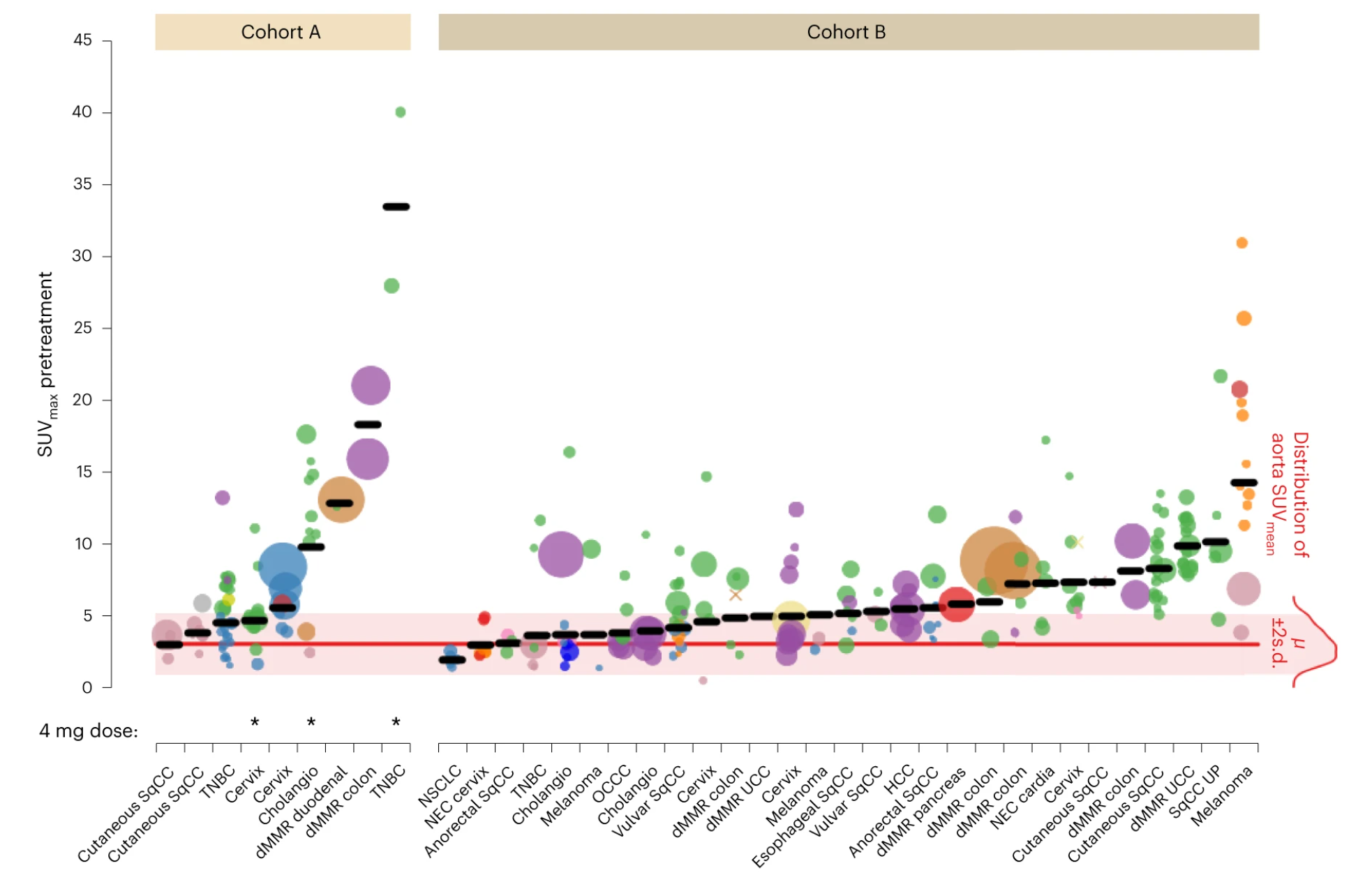Immune checkpoint inhibitors activate the host immune system to defend against tumors, and although this cancer therapy has shown remarkable success today, the chances of patient response to the therapy are still difficult to predict. In a recent study published in the December 05, 2022 issue of Nature Medicine entitled “Whole-body CD8+ T cell visualization before and during cancer immunotherapy: a phase 1/2 trial”, scientists from the University Medical Center Groningen and other institutions investigated the use of radiolabeled antibody tracers to perform wholebody PET scans of CD8+ T cells before and during cancer immunotherapy: a phase 1/2 trial, which may help reveal the complexity of patients’ responses to immunotherapy.
After demonstrating that the tracer binds to CD8+ T cells, the investigators say that the presence of CD8+ T cells may be heterogeneous and dynamic, and that insight into these dynamic features may influence future therapeutic decisions. Our body’s immune system evolves to remove foreign invaders such as pathogenic microbes, but it also has to remove cells that have become unrecognizable, so the body’s immune system attacks tumor cells, but these tumor cells have a way of silencing the function of T cells that infiltrate into the tumor, and the discovery of a pathway that eliminates this immunosuppression may be an important breakthrough in cancer therapy research, where immune checkpoint inhibitors can unleash the full power of T cells against tumors.
However, patient response to therapy is variable, so the researchers wanted to know as early as possible which patients would not respond, perhaps with some additional activation of the body’s immune system. To this end, in this study, the researchers performed a whole-body PET scan of the body’s CD8+ T cells, a marker of activated T cells, using antibodies and antibody fragments labeled with zirconium-89. The scans were performed before and 30 days after the start of therapy, and the researchers say that activated T cells are ubiquitous in the body, but as of now, their understanding of their distribution is based on biopsies, and the researchers want to get a deeper look at the whole picture.
They collected tumor biopsies from patients and analyzed them to confirm the accuracy of PET scan results, and compared the levels of radioactivity and CD8+ T-cell staining in biopsies measured by autoradiography, finding that tracer uptake was higher in lesions with higher CD8+ T-cell infiltration, an observation that suggests that tracer uptake may be a good approach to immune activation. The observations suggest that tracer intake may be a good way to activate the body’s immunity. The results of this study may help scientists analyze scans of the entire body, and the pre-presentation of CD8+ T cells may help predict patient outcomes, said researcher De Vries, adding that the researchers’ findings during treatment were striking in that they observed heterogeneity in patient response to therapy, both individually and between patients.
In this study, researchers investigated the response of the entire organism of patients treated with immune checkpoint inhibitors, but the treatment outcome was very complex. Scientists generally believed that the presence of CD8+ T cells in the organism of responders and non-responders would show a significant difference around 30 days of treatment, but this was not the case, and the response was much more dynamic, and in tumor lesions activated T cells can exhibit great spatial and temporal variability. This result is important because immune checkpoint inhibitors are now effective in an increasing number of cancer types, and the field of research is overwhelmingly dominated by the fact that this therapy is now not only used as a curative last resort, but can also be evaluated for its ability to help prevent tumor metastasis and to help reduce tumor size in the patient’s body preoperatively.
In addition, researchers are considering adding other drugs to improve the efficacy of immune checkpoint inhibitor therapy, perhaps at the cost of more side effects, as later researchers will need to pay more attention to which patients respond to immune checkpoint inhibitor therapy. In summary, the results of this study suggest that researchers may be able to perform whole-body scans of patients with the help of special tracers to reveal the complex nature of their response to immunotherapy.
Reference
1. Kist de Ruijter, Laura, et al. “Whole-body CD8+ T cell visualization before and during cancer immunotherapy: a phase 1/2 trial.” Nature Medicine 28.12 (2022): 2601-2610.

